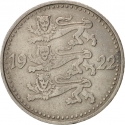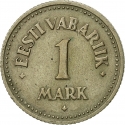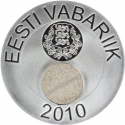You are about to finish your registration. Please check your mailbox (including spam folder). There should be a letter with a confirmation link. Check setting to make sure that your e-mail address is correct.
Send letter againDescription
Although the restoration of Estonia’s independence in August 1991 brought with it several changes in the institutional framework of the economy, Estonia still remained in the ruble zone. The monetary reform that introduced the Estonian kroon, conducted in June 1992, was a major turning point in economic reform.
Obverse

|
Depicted on the obverse are three lions with legends reading "EESTI" and "ESTONIA". EESTI |
|---|---|
Reverse

|
Depicts three Barn Swallows with the denomination above and the issue year below. 100 KROONI |
| Edge |
100 Krooni
Monetary Reform
KM# 27
Monetary Reform







